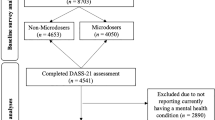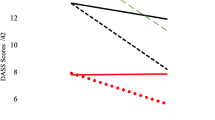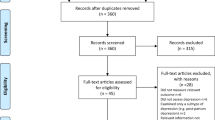Abstract
Emil Kraepelin, more than any other individual, has shaped the nature of our psychiatric diagnostic system. Kraepelin published his final contribution to psychiatric nosology as an essay in 1920, which both modified and explicated the conceptual foundation for this approach to diagnosis. This essay was a response to a new generation of psychiatrists, particularly Karl Jaspers, Karl Birnbaum, and Ernst Kretschmer, who each challenged Kraepelin’s view that psychiatric disorders represent natural kinds, (i.e., truly distinct entities). They had argued for a structural analysis of psychosis stressing the impact of unique, personal attributes on the causes and clinical presentations of mental diseases. The authors give this text a close reading and conclude that it offers a final nuanced description of Kraepelin’s advanced nosologic views and his emerging interest in life history and culture. Kraepelin held fast to his position that psychiatric disorders represented distinct natural kinds, but acknowledged that the distinctions between them were often obscured by personality, life experiences, and/or cultural effects. Kraepelin used several metaphors to illustrate his final views, that of an “organ register” being the most prominent. Psychiatric disorders, he postulated, belong to three registers, each with its own distinct clinical features and putative brain-based mechanisms. Published a century ago, this final synthesis of Kraepelin’s views, a capstone to his career, raises central issues about the nature of psychiatric illness and the appropriate goals for psychiatric nosology. They are fertile issues for psychiatric research and practice today.
This is a preview of subscription content, access via your institution
Access options
Subscribe to this journal
Receive 12 print issues and online access
$259.00 per year
only $21.58 per issue
Buy this article
- Purchase on Springer Link
- Instant access to full article PDF
Prices may be subject to local taxes which are calculated during checkout

Similar content being viewed by others
References
Trede K, Salvatore P, Baethge C, Gerhard A, Maggini C, Baldessarini RJ. Manic-depressive illness: evolution in Kraepelin’s Textbook, 1883–1926. Harv Rev Psychiatry. 2005;13:155–78.
Engstrom EJ. Tempering Madness: Emil Kraepelin’s research on affective disorders. In: Dror OE, Hitzer B, Laukötter A, León-Sanz P editors. History of Science and the Emotions. Chicago: University of Chicago Press; 2016. pp. 163–80.
Kendler KS, Engstrom EJ. Kahlbaum, Hecker, and Kraepelin and the transition from psychiatric symptom complexes to empirical disease forms. Am J Psychiatry. 2017;174:102–9.
Kendler KS. The genealogy of dementia praecox I: signs and symptoms of delusional psychoses from 1880 to 1900. Schizophr Bull. 2019;45:296–304.
Kendler KS. The development of Kraepelin’s mature diagnostic concept of hebephrenia: a close reading of relevant texts of Hecker, Daraszkiewicz, and Kraepelin. Mol Psychiatry. 2020;25:180–93.
Kendler KS, Engstrom EJ. Dreyfus and the shift of melancholia in Kraepelin’s textbooks from an involutional to a manic-depressive illness. J Affect Disord. 2020;270:42–50.
Kraepelin E. Die Erscheinungsformen des Irreseins. Z Gesamt Neurol Psychiatr. 1920;62:1–29.
Kraepelin E. Patterns of mental disorder. In: Hirsch SR, Shepherd M editors. Themes and variations in European psychiatry. Bristol: John Wright & Sons; 1974. pp. 7–30.
Kraepelin E, Beer D. The manifestations of insanity. Hist Psychiatry. 1992;3:504–8.
Mayer-Groß W. Die Entwicklung der klinischen Anschauungen Kraepelins. AfPN. 1929;87:30–42.
Kahn E. Emil Kraepelin. Am J Psychiatry. 1956;113:289–94.
Hoff P. Emil Kraepelin und die Psychiatrie als klinische Wissenschaft. Ein Beitrag zum Selbstverständnis psychiatrischer Forschung. Berlin: Springer; 1994.
Kendler KS, Jablensky A. Kraepelin’s concept of psychiatric illness. Psychol Med. 2011;41:1119–26.
Meyer A. Emil Kraepelin 1856–1926. In: Winters EE editors. The collected papers of Adolf Meyer. Baltimore: Johns Hopkins Press; 1926/27 [1951]. pp. 521–6.
Farrar CB. I remember Kraepelin. Am J Psychiatry. 1954;111:379–81.
Strömgren E. Uses and abuses of concepts in psychiatry. Am J Psychiatry. 1969;126:777–88.
Jablensky A. Kraepelin’s legacy: paradigm or pitfall for modern psychiatry? Eur Arch Psychiatry Clin Neurosci. 1995;245:186–8.
Angst J. Historical aspects of the dichotomy between manic-depressive disorders and schizophrenia. Schizophrenia Res. 2002;57:5–13.
Mazzarini L, Vieta E. Toward a valid classification of psychosis: overcoming the schizophrenia-bipolar dichotomy. Psychiatr Ann. 2010;40:143–8.
Lake CR. Schizophrenia is a misdiagnosis. Implications for the DSM-5 and the ICD-11. New York: Springer; 2012.
Kendler KS, Engstrom EJ. Criticisms of Kraepelin’s psychiatric nosology: 1896–1927. Am J Psychiatry. 2018;175:316–26.
Hoche AE. Die Bedeutung der Symptomenkomplexe in der Psychiatrie. Z Gesamt Neurol Psychiatr. 1912;12:540–51.
Bumke O. Die Auflösung der dementia praecox. Klinisch Wochenschr. 1924;3:437–40.
Bonhoeffer K. Die symptomatischen Psychosen im Gefolge von akuten Infektionen und inneren Erkrankungen. Leipzig, Franz Deuticke; 1910.
Jaspers K. Allgemeine Psychopathologie. Ein Leitfaden für Studierende, Ärzte und Psychologen. 1st edition, 1913 ed. Berlin: Springer Verlag; 1913.
Ghaemi SN. Nosologomania: DSM & Karl Jaspers’ critique of Kraepelin. Philos Ethics Hum Med. 2009;4:10.
Walker C. Karl Jaspers on the disease entity: Kantian ideas and Weberian ideal types. Hist Psychiatry. 2014;25:317–34.
Birnbaum K. Klinische Schwierigkeiten im Psychogeniegebiet. Monatsschr Psychiatr Neurol. 1917;41:339–73.
Birnbaum K. Der Aufbau der Psychose. Ein klinischer Versuch. Allg Z Psychiatr Psych-Gerichtl Med. 1919;75:455–502.
Birnbaum K. Die Strukturanalyse als klinisches Forschungsprinzip. Z Gesamt Neurol Psychiatr. 1920;53:121–9.
Birnbaum K. Der Aufbau der Psychose. Grundzüge der psychiatrischen Strukturanalyse. Berlin: Springer Verlag; 1923.
Birnbaum K. The making of psychosis: The principles of structural analysis in psychiatry. In: Hirsch SR, Shepherd M editors. Themes and variations in European psychiatry. Bristol: John Wright & Sons; 1974. pp. 199–238.
Kretschmer E. Der sensitive Beziehungswahn. Ein Beitrag zur Paranoiafrage und zur psychiatrischen Charakterlehre. Berlin: Springer Verlag; 1918.
Kretschmer E. The sensitive delusion of reference. In: Hirsch SR, Shepherd M editors. Themes and variations in European psychiatry. Bristol: John Wright & Sons; 1974. pp. 153–95.
Kretschmer E. Gedanken über die Fortentwicklung der psychiatrischen Systematik. Z Gesamt Neurol Psychiatr. 1919;48:370–9.
Weber M. Objectivity in social science and social policy. In: Shils EA, Finch HA editors. The methodology of the social sciences. New York: Free Press; 1904/1949.
Berrios GE. Positive and negative symptoms and Jackson. A conceptual history. Arch Gen Psychiatry. 1985;42:95–97.
Unai Y. Clinical study of schizophrenia-application of Jacksonism. Psychopathology. 1992;25:189–98.
Kraepelin E. Psychiatrie. Ein Lehrbuch für Studierende und Ärzte. Achte, vollständig umgearbeitete Auflage. III. Band. Klinische Psychiatrie. II. Teil. Leipzig, Johann Ambrosius Barth; 1913.
Kolle K. Emil Kraepelin (1856–1926). In: Kolle K editor. Grosse Nervenärzte. Band I. Stuttgart: Thieme Verlag; 1970.
Irro F, Hagemann P. Karl Birnbaum. Versuch einer Würdigung der Lebensarbeit eines bedeutenden Psychiaters und zugleich ein verspäteter Nachruf. Psychiatr Neurol Medizinisch Psychol. 1973;25:117–23.
Kronfeld A. Bemerkungen zu den Ausführungen von Karl Birnbaum über die Strukturanalyse als klinisches Forschungsprinzip. Z Gesamt Neurol Psychiatr. 1920;53:317–24.
Arthur Kronfeld to Emil Kraepelin, 21 January 1921. In: Burgmair W, Engstrom EJ editors. Emil Kraepelin: Kraepelin in München II, 1914–1921. Belleville: Weber MM Munich; 2009.
Kraepelin E. Die Erforschung psychischer Krankheitsformen. Z Gesamt Neurol Psychiatr. 1920;51:224–46.
Engstrom EJ. Die Ôkonomie klinischer Inskription: Zu diagnostischen und nosologischen Schreibpraktiken in der Psychiatrie. In: Borck C, Schäfer A. Psychographien. Zurich: Diaphanes; 2005. pp. 219–40.
Kraepelin E. Über Entwurzelung. Z Gesamt Neurol Psychiatr. 1921;63:1–8.
Engstrom EJ, Weber MM. ‘On uprootedness’ by Emil Kraepelin (1921). Hist Psychiatry. 2010;21:340–50.
Hyman SE. The diagnosis of mental disorders: the problem of reification. Annu Rev Clin Psychol. 2010;6:155–79.
Insel T, Cuthbert B, Garvey M, Heinssen R, Pine DS, Quinn K, et al. Research domain criteria (RDoC): toward a new classification framework for research on mental disorders. Am J Psychiatry. 2010;167:748–51.
Kotov R, Krueger RF, Watson D. A paradigm shift in psychiatric classification: the hierarchical taxonomy of psychopathology (HiTOP). World Psychiatry. 2018;17:24–25.
Van Os J. Are psychiatric diagnoses of psychosis scientific and useful? The case of schizophrenia. J Ment Health. 2010;19:305–17.
McGorry PD, Hickle IB. Clinical staging in psychiatry: Making diagnosis work for research and treatment. Cambridge: Cambridge University Press; 2019.
Steingard S. Critical psychiatry. Controversies and clinical implications. Cham, Switzerland: Springer Nature Switzerland; 2019.
Stanghellini G, Broome M, Fernandez AC, Rosfort R, Raballo A, Fusar Poli P. The Oxford Handbook of Phenomenological Psychopathology. Oxford: Oxford University Press; 2021.
LeCroy CW, Holschuh J. First person accounts of mental illness and recovery. Hoboken, NJ: John Wiley & Sons; 2012.
Author information
Authors and Affiliations
Corresponding author
Ethics declarations
Competing interests
The authors declare no competing interests.
Additional information
Publisher’s note Springer Nature remains neutral with regard to jurisdictional claims in published maps and institutional affiliations.
Supplementary information
Rights and permissions
About this article
Cite this article
Heckers, S., Engstrom, E.J. & Kendler, K.S. “Manifestations of insanity”: Kraepelin’s final views on psychiatric nosology in their historical context. Mol Psychiatry 27, 328–334 (2022). https://doi.org/10.1038/s41380-021-01232-9
Received:
Revised:
Accepted:
Published:
Issue Date:
DOI: https://doi.org/10.1038/s41380-021-01232-9



